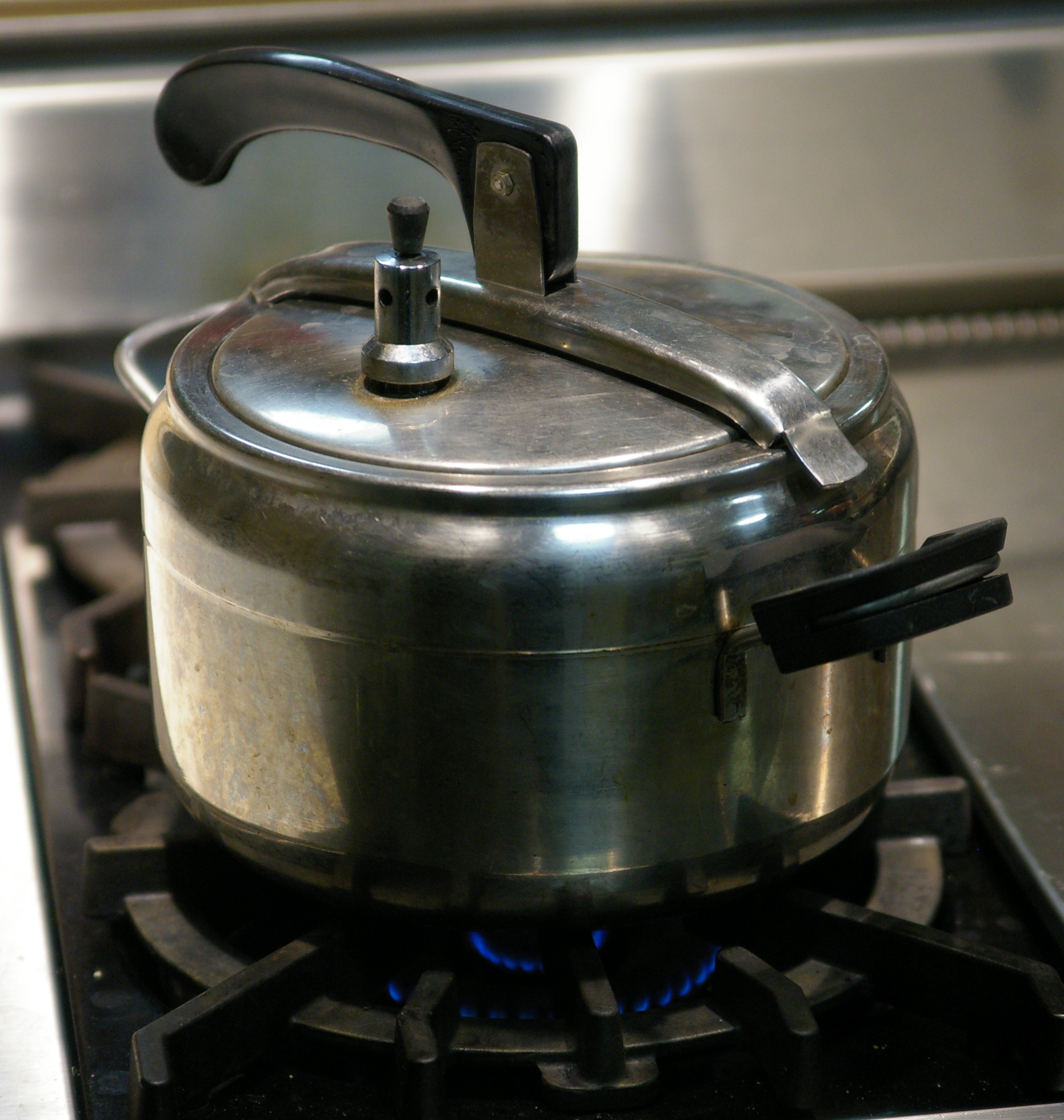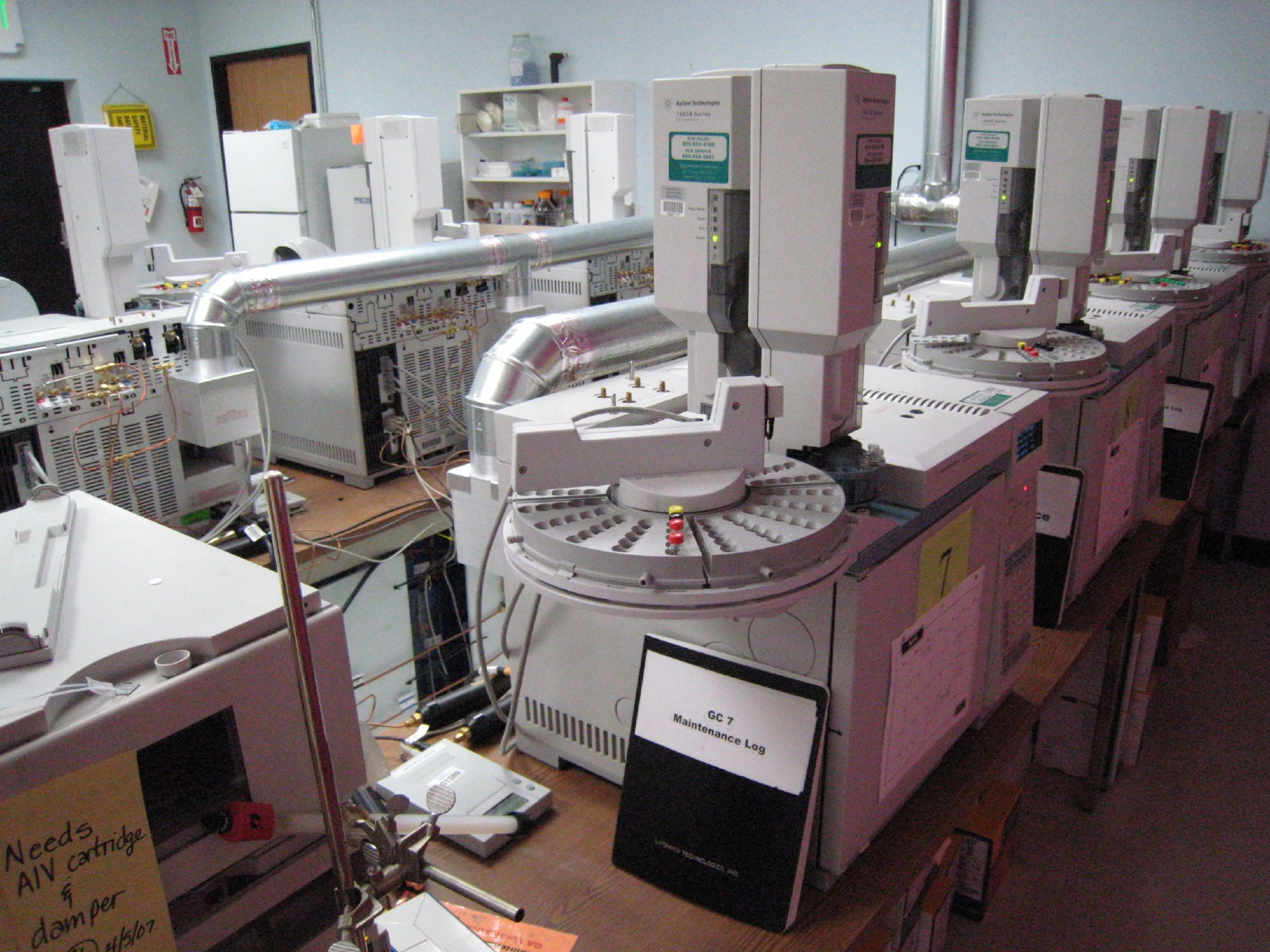|
Accelerated Solvent Extraction
Accelerated solvent extraction (ASE), also known as pressurized solvent extraction (PSE), is a method for extracting various chemicals from a complex solid or semisolid sample matrix. The process uses high temperature and pressure, which results in the extraction taking less time and requiring less solvent, and possibly also giving better analyte recovery, than traditional methods that use less extreme conditions. The elevated temperature is employed to increase extraction efficiency of the analyte of interest and the elevated pressure is used to keep the solvent in a liquid state as the temperature is increased above its boiling point. An automated system for the process was developed by Dionex, a company owned by Thermo Fisher Scientific. Method The extraction cell is filled with the solid sample to be examined and placed in a temperature-controllable oven. After adding the solvent, the cell is heated at constant pressure (adjustable between 0.3 and 20 MPa) up to a maximum tem ... [...More Info...] [...Related Items...] OR: [Wikipedia] [Google] [Baidu] |
Thermo Fisher Scientific
Thermo Fisher Scientific Inc. is an American supplier of scientific instrumentation, reagents and consumables, and software services. Based in Waltham, Massachusetts, Thermo Fisher was formed through the Mergers and acquisitions, merger of Thermo Electron and Fisher Scientific in 2006. Thermo Fisher Scientific has acquired other reagent, consumable, instrumentation, and service providers, including: Life Technologies (Thermo Fisher Scientific), Life Technologies Corporation (2013), Alfa Aesar (2015), Affymetrix (2016), FEI Company (2016), BD (company), BD Advanced Bioprocessing (2018), and PPD, Inc., PPD (2021). As of 2017, the company had a market capitalization of $21 billion and was a Fortune 500 company. Annual revenue in 2021 was US$39.21 billion. In March 2020, Thermo Fisher Scientific received emergency use authorization from the FDA for a test for SARS-CoV-2 to help mitigate the COVID-19 pandemic. History Predecessors and merger Thermo Electron was co-founded in 1 ... [...More Info...] [...Related Items...] OR: [Wikipedia] [Google] [Baidu] |
Solid Phase Extraction
Solid-phase extraction (SPE) is an extractive technique by which compounds that are dissolved or suspended in a liquid mixture are separated from other compounds in the mixture according to their physical and chemical properties. Analytical laboratories use solid phase extraction to concentrate and purify samples for analysis. Solid phase extraction can be used to isolate analytes of interest from a wide variety of matrices, including urine, blood, water, beverages, soil, and animal tissue. SPE uses the affinity of solutes dissolved or suspended in a liquid (known as the mobile phase) for a solid through which the sample is passed (known as the stationary phase) to separate a mixture into desired and undesired components. The result is that either the desired analytes of interest or undesired impurities in the sample are retained on the stationary phase. The portion that passes through the stationary phase is collected or discarded, depending on whether it contains the desired ... [...More Info...] [...Related Items...] OR: [Wikipedia] [Google] [Baidu] |
Extraction (chemistry)
Extraction in chemistry is a separation process consisting of the separation of a substance from a matrix. Common examples include '' liquid-liquid extraction'', and '' solid phase extraction''. The distribution of a solute between two phases is an equilibrium condition described by partition theory. This is based on exactly how the analyte moves from the initial solvent into the extracting solvent. The term ''washing'' may also be used to refer to an extraction in which impurities are extracted from the solvent containing the desired compound. Types of extraction * Liquid–liquid extraction * Solid-phase extraction * Acid-base extraction * Supercritical fluid extraction * Ultrasound-assisted extraction * Heat reflux extraction * Mechanochemical-assisted extraction * Maceration * Microwave-assisted extraction * Instant controlled pressure drop extraction (DIC, from the French, Détente instantanée contrôlée) * Perstraction Laboratory applications and examples L ... [...More Info...] [...Related Items...] OR: [Wikipedia] [Google] [Baidu] |
Matrix (chemical Analysis)
In chemical analysis, matrix refers to the components of a sample other than the analyte of interest. The matrix can have a considerable effect on the way the analysis is conducted and the quality of the results are obtained; such effects are called matrix effects.F. W. Fifield, P. J. Haines. ''Environmental Analytical Chemistry''. Blackwell Publishing, 2000, p. 4-5. . For example, the ionic strength of the solution can have an effect on the activity coefficients of the analytes.Harris, D. C. ''Quantitative Chemical Analysis'', 4th ed. Freeman, 1995, pp.194, 404. . The most common approach for accounting for matrix effects is to build a calibration curve using standard samples with known analyte concentration and which try to approximate the matrix of the sample as much as possible. This is especially important for solid samples where there is a strong matrix influence.Marco Aurelio Zezzi Arruda. ''Trends in Sample Preparation''. Nova Publishers, 2006, p. 15-18. . In cases with comp ... [...More Info...] [...Related Items...] OR: [Wikipedia] [Google] [Baidu] |
Dionex
Dionex Corporation is an American company based in Sunnyvale, California. It develops, manufactures, sells, and services analytical chromatography systems for separating, isolating, and identifying the components of chemical mixtures. Such equipment is used in pharmaceutical manufacturing, medical research, environmental monitoring, and food testing. In December 2010 Thermo Fisher Scientific announced its acquisition of Dionex for $2.1 billion. Products Software Dionex developed the ''Chromeleon'' brand of chromatography software. The primary function of Chromeleon is to control and obtain data from analytical instruments, such as GC, LC, IEX and MS. Chromeleon is fully Title 21 CFR Part 11 compliant. Chromeleon 7.3 is the latest edition of the software. Hardware The technology made by Dionex includes the Rapid Separation LC (RSLC) and polymeric HPLC columns, a type of monolithic HPLC column A monolithic HPLC column, or monolithic column, is a column used in high-performance ... [...More Info...] [...Related Items...] OR: [Wikipedia] [Google] [Baidu] |
Catechin
Catechin is a flavan-3-ol, a type of secondary metabolite providing antioxidant roles in plants. It belongs to the subgroup of polyphenols called flavonoids. The name of the catechin chemical family derives from '' catechu'', which is the tannic juice or boiled extract of ''Mimosa catechu'' ('' Acacia catechu'' L.f). Chemistry Catechin possesses two benzene rings (called the A- and B-rings) and a dihydropyran heterocycle (the C-ring) with a hydroxyl group on carbon 3. The A-ring is similar to a resorcinol moiety while the B-ring is similar to a catechol moiety. There are two chiral centers on the molecule on carbons 2 and 3. Therefore, it has four diastereoisomers. Two of the isomers are in trans configuration and are called ''catechin'' and the other two are in cis configuration and are called ''epicatechin''. The most common catechin isomer is (+)-catechin. The other stereoisomer is (-)-catechin or ''ent''-catechin. The most common epicatechin isomer is (-)-epic ... [...More Info...] [...Related Items...] OR: [Wikipedia] [Google] [Baidu] |
Terpenoid
The terpenoids, also known as isoprenoids, are a class of naturally occurring organic chemicals derived from the 5-carbon compound isoprene and its derivatives called terpenes, diterpenes, etc. While sometimes used interchangeably with "terpenes", terpenoids contain additional functional groups, usually containing oxygen. When combined with the hydrocarbon terpenes, terpenoids comprise about 80,000 compounds. They are the largest class of plant secondary metabolites, representing about 60% of known natural products. Many terpenoids have substantial pharmacological bioactivity and are therefore of interest to medicinal chemists. Plant terpenoids are used for their aromatic qualities and play a role in traditional herbal remedies. Terpenoids contribute to the scent of eucalyptus, the flavors of cinnamon, cloves, and ginger, the yellow color in sunflowers, and the red color in tomatoes. Well-known terpenoids include citral, menthol, camphor, salvinorin A in the plant ''Salvia d ... [...More Info...] [...Related Items...] OR: [Wikipedia] [Google] [Baidu] |
Sterol
Sterol is an organic compound with formula , whose molecule is derived from that of gonane by replacement of a hydrogen atom in position 3 by a hydroxyl group. It is therefore an alcohol of gonane. More generally, any compounds that contain the gonane structure, additional functional groups, and/or modified ring systems derived from gonane are called steroids. Therefore, sterols are a subgroup of the steroids. They occur naturally in most eukaryotes, including plants, animals, and fungi, and can also be produced by some bacteria (however likely with different functions). The most familiar type of animal sterol is cholesterol, which is vital to cell membrane structure, and functions as a precursor to fat-soluble vitamins and steroid hormones. While technically alcohols, sterols are classified by biochemists as lipids ( fats in the broader sense of the term). Types Sterols of plants are called '' phytosterols'' and sterols of animals are called ''zoosterols''. The most impo ... [...More Info...] [...Related Items...] OR: [Wikipedia] [Google] [Baidu] |
Supercritical Fluid Extraction
Supercritical fluid extraction (SFE) is the process of separating one component (the extractant) from another (the matrix) using supercritical fluids as the extracting solvent. Extraction is usually from a solid matrix, but can also be from liquids. SFE can be used as a sample preparation step for analytical purposes, or on a larger scale to either strip unwanted material from a product (e.g. decaffeination) or collect a desired product (e.g. essential oils). These essential oils can include limonene and other straight solvents. Carbon dioxide (CO2) is the most used supercritical fluid, sometimes modified by co-solvents such as ethanol or methanol. Extraction conditions for supercritical carbon dioxide are above the critical temperature of 31 °C and critical pressure of 74 bar. Addition of modifiers may slightly alter this. The discussion below will mainly refer to extraction with CO2, except where specified. Advantages Selectivity The properties of the supercritical fluid ... [...More Info...] [...Related Items...] OR: [Wikipedia] [Google] [Baidu] |
Superheated Water
Superheated water is liquid water under pressure at temperatures between the usual boiling point, and the critical temperature, . It is also known as "subcritical water" or "pressurized hot water". Superheated water is stable because of overpressure that raises the boiling point, or by heating it in a sealed vessel with a headspace, where the liquid water is in equilibrium with vapour at the saturated vapor pressure. This is distinct from the use of the term superheating to refer to water at atmospheric pressure above its normal boiling point, which has not boiled due to a lack of nucleation sites (sometimes experienced by heating liquids in a microwave). Many of water's anomalous properties are due to very strong hydrogen bonding. Over the superheated temperature range the hydrogen bonds break, changing the properties more than usually expected by increasing temperature alone. Water becomes less polar and behaves more like an organic solvent such as methanol or ethanol. Sol ... [...More Info...] [...Related Items...] OR: [Wikipedia] [Google] [Baidu] |
Analytical Chemistry
Analytical chemistry studies and uses instruments and methods to separate, identify, and quantify matter. In practice, separation, identification or quantification may constitute the entire analysis or be combined with another method. Separation isolates analytes. Qualitative analysis identifies analytes, while quantitative analysis determines the numerical amount or concentration. Analytical chemistry consists of classical, wet chemical methods and modern, instrumental methods. Classical qualitative methods use separations such as precipitation, extraction, and distillation. Identification may be based on differences in color, odor, melting point, boiling point, solubility, radioactivity or reactivity. Classical quantitative analysis uses mass or volume changes to quantify amount. Instrumental methods may be used to separate samples using chromatography, electrophoresis or field flow fractionation. Then qualitative and quantitative analysis can be performed, often with ... [...More Info...] [...Related Items...] OR: [Wikipedia] [Google] [Baidu] |



